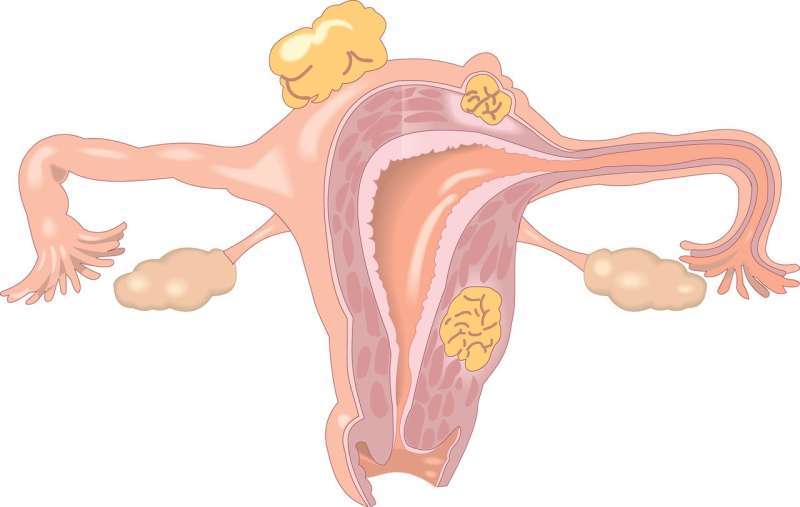November 9, 2023 report
This article has been reviewed according to Science X's editorial process and policies. Editors have highlighted the following attributes while ensuring the content's credibility:
fact-checked
trusted source
proofread
Ancient Egyptian burial reveals ovarian teeth in oldest example of teratoma

A case study led by Southern Illinois University, Illinois, has described the earliest discovery of an ovarian teratoma, a type of tumor that contains well-differentiated tissues developed from three germ cell layers (ectoderm, mesoderm, and endoderm).
Teratomas can present as hair, teeth, bones and, in the most extreme cases, partial limbs and underdeveloped organs, which is perhaps where the tumor form got its name "teratoma," derived from the Greek word "teras," meaning monster.
In a paper, "A mature ovarian teratoma from New Kingdom Amarna, Egypt," published in the International Journal of Paleopathology, the researchers detail the archaeological discovery of a mature ovarian teratoma in Amarna, Egypt, dating to the mid-14th century BCE.
It is just the fifth known case of a mature ovarian teratoma found in the archaeological record and the only one reported from Pharaonic Egypt or Africa, predating other reported cases by several centuries.
The presence of multiple teeth and their degree of development provided strong evidence for identifying the mass as an ovarian teratoma. The teratoma was associated with a young woman, 18–21-year-old, buried in one of the more adorned non-elite burials at Amarna.
The remains were found in a multi-chambered underground tomb in the North Desert Cemetery at Amarna, accompanied by a calcified mass and two associated teeth within the pelvic cavity. It is unclear what was known of the woman's condition at the time, though the young age at the time of death could indicate that she died from an infection associated with the condition.
Postmortem discoveries of teratomas have historically been either superstitiously misunderstood as being signs of immoral behavior or witchcraft, or scientifically as malformed pregnancy outcomes. Neither is correct, as the lesions are now understood to be tumors forming from multiple germ cell layers and can occur in people who are virgins, both male and female, with ovaries and testes being the most common site of occurrence.
Today, such a condition would be visible in an X-ray and likely treatable by surgery. But thousands or even a hundred years ago, the tumor would probably go undiscovered, leaving patients and clinicians to treat symptoms for a condition they could not have imagined existed.
More information: Gretchen R. Dabbs et al, A mature ovarian teratoma from New Kingdom Amarna, Egypt, International Journal of Paleopathology (2023). DOI: 10.1016/j.ijpp.2023.10.004
© 2023 Science X Network



















